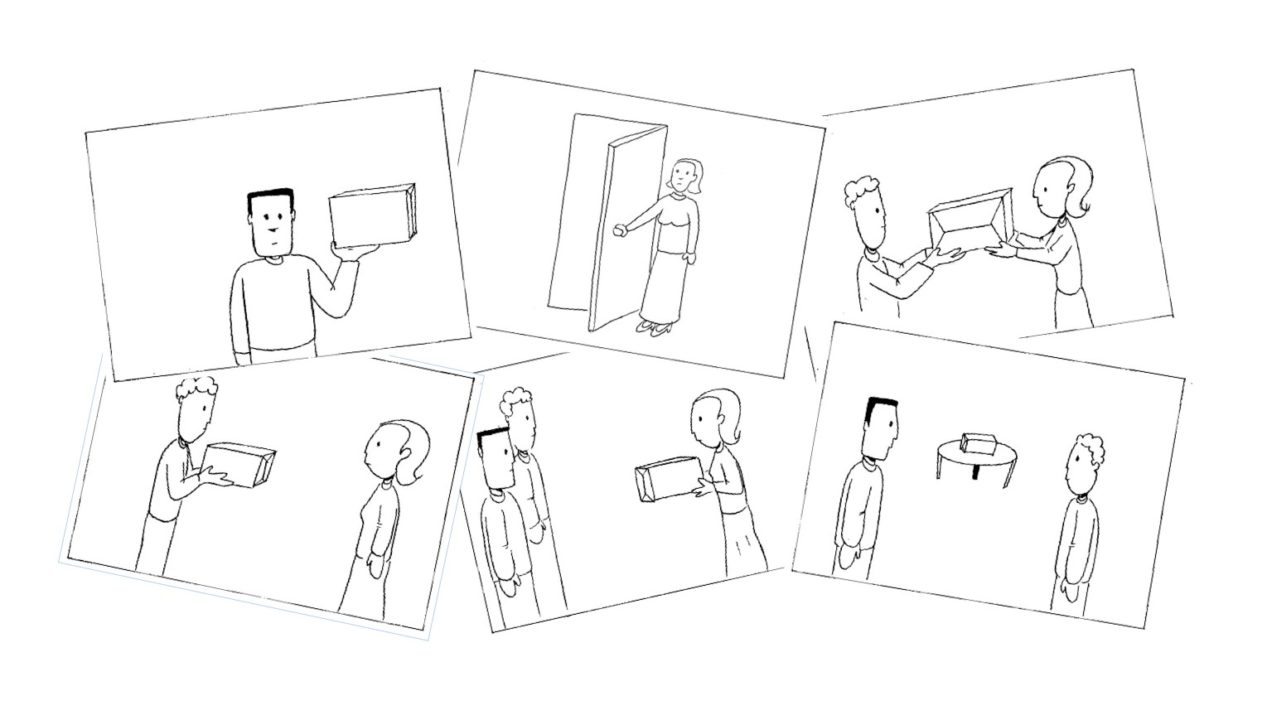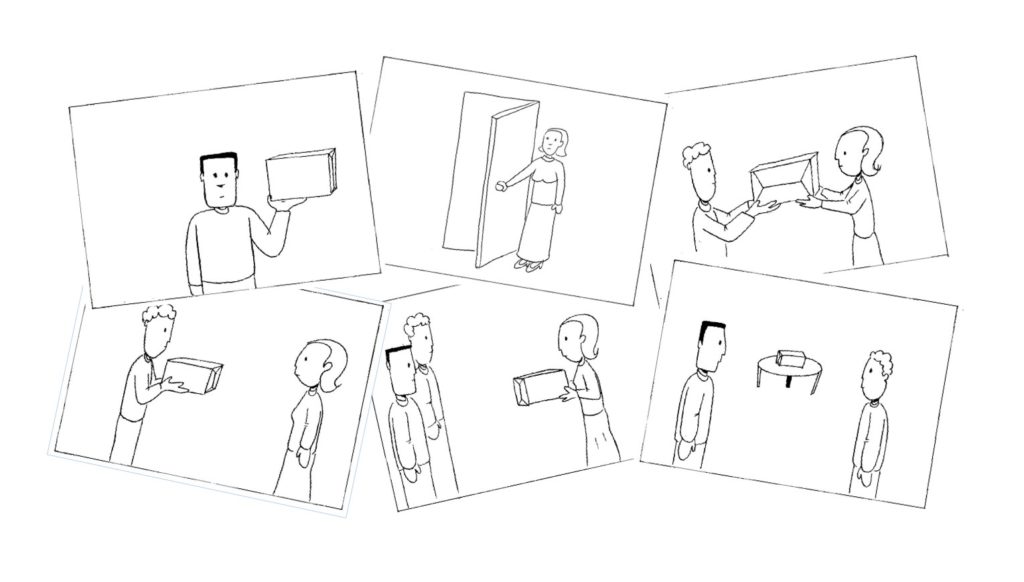Version française à venir.
Abstract
This paper describes a pedagogic exercise given to designers to be (1st year), within a communication class. The exercise is only based on the use of 6 given images.
The exercise takes place after two sessions, the first of which being devoted to the participative construction of the famous communication schema (emitter, coding, channel + noise, decoding, receiver).
In the second session, starting with this schema, the emitter is then replaced by “the world” and the receiver by “you”. With the help of this redefined schema, we come to “demonstrate” to the students that the first limit of our communication with the world is to be found in our perception mechanisms, and that, in that respect, we are always abstracting, and that what we call « reality » is literally and technically an abstraction.
To free ourselves from this prison, we then “demonstrate” to the students that the only way to go beyond the limits of our perception is to build theories, through which it is then possible to discover all the hidden dimensions of the world.
But, by doing so, we are in reality building a new but even more perverse prison: the prison of our vision of the world. In that respect, we are de facto projecting on the world what we know about it: after being an abstraction, the world is moreover a projection.
The actual exercise demonstrates this second proposition in a very obvious and direct way.
With the help of 6 very simple images including characters and various other representations, we demonstrate, again, that the students are prisoners of theories. This is done by asking them to create a story of their own, using all 6 images, without any other constraints than the images themselves. We urge them to be creative.
When done, after one hour, the comparison between all the stories shows clearly and simply that they are projecting what they know about the “theory” of images and narration, thus limiting themselves to a common – and therefore not creative – domain of narration.
After this explanation is given, students are asked again to produce more stories, but this time by freeing them from the theory, and the results are simply astonishing.
Preamble
This is not a scientific paper. This is a paper about teaching, a paper about reality, a paper about teaching reality. This is a paper about creating, a paper about teaching creativity. This is a paper about design, a paper about teaching design. Eventually, this is a paper about all possible combinations between reality, creativity, design and teaching.
It does not intend to make some science, or to even to theorize. It does not relate to any designated academic works, even if a lot of readers will connect it to known theories or researches.
No. It is a paper about my own and personal practice, within a French design school – Strate Collège Designers[1] – in which I have been giving so-called “communication” classes to the first year students for more than 9 years now.
This class is about destroying – quite an apparent paradox to speak about destruction in a conference devoted to Constructionism.
But, why speaking about destruction in a communication class within a design school? Are not we supposed, as pedagogues, moreover in an applied art school, to be in a constructive approach, helping our students to build a better future through a design process?
There is no paradox, just a necessity. Our human systems are based on some pereniality, permanencies, and persitencies: of systems, models, behaviors, or customs. And this is why they give some permanence to the world so that we can move and live individually and collectively in a relative order and security. This order, a necessity not only to live, but to survive, might also be a danger and turns against living and surviving.
This is what I would like to demonstrate in this paper. I will first define the general context in which I give my class, and build from that the two basic “theorems” about reality I share with my students. I will then describe precisely how I illustrate one of them through an exercise I created, that illustrates quite simply and immediately both some theoretical issues – philosophical and epistemological – and operational ones, that allow students to eventually have a pacified relationship to people, situation and creation.
From Shannon to Plato
The first thing I do with my students, in my communication class, is to interrogate them on what is communication. I actually ask them to give me keywords in quantity. And they do!
After half an hour, I have written on my board a lot of words, and even messy, the set of keywords gives a very large picture of what 21st century youngsters think what communication is all about. From the Internet to Wi-Fi, from writing to reading, from adds to politics, a lot of concepts related to “communication” are more or less on the board.
I then ask my students to narrow or to constrain their answers by considering “Communication” in a very generic or universal way. Or, to say it differently, what is common to communication whatever are the actors involved? To help them, I ask them to adopt the point of view of an amoeba[2]: what communication is from a mono-cellular point of view? You can imagine that a lot of words/concepts then disappear from the board (e.g. politics…), while others are proposed.
After a while, I get some relevant words (more or less 100) that I ask them to categorize “freely” into 4 or 5 families, I actually more or less insinuate.
Very “obviously” and “naturally”, they come out with categories that are labeled :
- Meaning
- Writing
- Coding/Decoding
- Noise
- Reading
- Interpreting
That leads us to draw on the board the classic communication schema:
- The emitter has an intention;
- H e codes his intention into a sequence of signs M1;
- M1 goes through a channel, and is possibly transformed due to some noise into a different sequences of signs M2;
- The receiver decodes M2,
- And interpret it.
The schema is a precious and fundamental tool. It helps me to explain what communication traps one must avoid : confusion.
Confusion between the emitter intention and my message M1, confusion between the message M1 and the message M2, confusion between the message M2 and the receiver interpretation. Those confusions are at the origin of most of human communication problems. Being aware of that is the beginning of a real communication wisdom.
Hello World !
If the hypothesis that the schema is really universal, it is worth verifying the assumption. The next step is therefore to work on very special emitter and receiver:
- The emitter is: the world!
- The receiver is: you!
It is then very interesting to verify, with the students, if and how the schema is still functioning, starting – nonetheless – with the question: Is the world having any intention[3]?
When it comes to Coding and Decoding (leaving aside the question of intention and interpretation, i.e. the question of meaning), the students very rapidly discover that we are speaking about perceiving the world through our senses.
Considering that all our senses are structurally functioning in a comparable way, we then focus on one of them – sight – to analyze “mechanically” the process of coding/decoding the world.
As in the preceding figure, we first illustrate the way the eye, as a machine, catches the image of a flame. We then focus on what is happening on the retina.
The reverse image of the flame is projected on the retina, as on a screen. The screen itself is composed of very little sensors (retinal rods)[4], which size defines the “resolution” of the retina, hence the smallest perceptible part of the image. Anything smaller than this retinal rod is literally invisible by the human eye, the given rod aggregating all the light information it receives into a single information.
The conclusion of this simple analysis is that the world our senses is perceiving is a pixelised world, a world where the order of magnitude of information sent is very significantly bigger than the order of magnitude of information perceived. The world, as we “see” it is nothing but a drastic simplification of the world per se: literally and precisely an abstraction.
This is the first theorem: the world is an abstraction[5]!
The lesson is: do not believe your senses, they are lying by omission, by constantly abstracting. Confusion, once again, is the ultimate sin: confusion between what we see and what is seen. As in the emitter/receiver general schema we are facing the worst problems, with the world, with others, and with ourselves by ignoring this confusion.
The deep meaning of this theorem is that the world, in it completeness, is unreachable, unknowable, forever lost, if we have just to rely on our body. Our body is actually a cruel “reality diving suit”, structurally and massively filtering information from the environment. We (me, all my students, and you) are moving in a world where an infinitesimal part of any situation is seen, where darkness is the rule, and where blindness is weakness.
From a prison to another
If we are prisoners of our senses, how can we free ourselves from this prison? This is the systematic and full of anguish question I get from my students as soon as they understand they are stuck into a “reality diving suit”. Through question and dialog I bring them to a known and simple answer: by building theories.
When our prehistoric ancestors, thanks to their observations, planned a hunt by taking into account the topography, the wind direction, the position of the sun, the vegetation, the systematic behaviors of aurochs, they are just theorizing, modelizing the reality, and anticipating the sequence of situation, by understanding and mastering causality.
When inventors of agriculture tried to plan all their campaign by understanding the time cycles – day, weeks, months, years – by observing the sun, the moon, and the wandering stars, they were building a total theory of the world, a cosmogony, thanks to which they were able to plan their action, for a greater good for the community.
When Isaac Newton, created his gravitation theory, he offered mankind the ability to predict with an incredible precision any movement of any object in the universe, either small or big as a planet, and hence to read the world as a gigantic mechanism. The industrial revolution is born from his theory, and from the Coca-Cola can to the “Eagle” Lunar Module, most human projects, either big or small, are based on his theory.
When Einstein, Schrödinger and others created the quantum mechanics they offered an unprecedented tool to understand (so to speak!), and use what is happening beyond our every day understandings. Our lives have deeply changed because of their discoveries, last but not least being the computer I am relying on today to communicate, learn, enjoy, live.
To summarize, Man has been able to go beyond the limits of his body and of his senses by creating representations of the world, within which he can mentally play and anticipate events, and more than that create events, in order not only to survive but to reach given and wanted objectives. The ability to represent is at the heart of humanization, and has been the ultimate weapon to conquer the planet.
If primitive cosmogony is not comparable to general relativity, both are tools to read the world, navigate into it, and anticipate. They are representations of the world. They are “theories”, which etymologically means “look at things”.
With this ability to represent the world, and to use these representations, we might think that man has overcome the curse of the first theorem (the world is an abstraction), freeing himself from his reality diving suit, going far beyond the limit of his senses, no longer exposed to any limitation to his action and knowledge.
It is obviously false. If man actually freed himself from the prison of his sense, he has been creating a new and wider prison, even more dangerous because he cannot always see its walls. Theories are dangerous prisons as soon as we confuse them with the world they are supposed to describe: confusion again, confusion always. The danger of this confusion is even bigger because theories are so wonderful and efficient tools that we are pushed to identity the model and the world of phenomenoms they are supposed to modelized, hypnotized we are by this efficiency.
The fantastic and yet dangerous aspect of this confusion is that it is not only a mental and abstract one. It literally changes the way we “look” at the world. And by looking, I mean not only seeing through our eyes, but also reading it. Actually we tend to project what we believe, what we know onto the world.
This is the second theorem: the world is a projection.
This projection is a real limitation to our intelligence, because it caracterises, and even categorizes, every situation in order to fit in our vision of the world.
It has a direct effect not only on the way we think the world but even on the way we are looking at the world. Theory is actually not only a look at things. Very often it is a thing too! A chair, for instance, is mostly a theory of seating before being a material object made of wood and fabric. We never see it as the last, but always for the function it bears. Just try to give a chair to someone, holding it quite high, and ask him/her to put on the ground. The chair will always finish on its feet, rather than on any other position!
This can lead to the most violent and brutal situations, generated by the intolerance (in “good faith”, and that is the problem) induced by the ultimate confusion between theories of the world and the world. Not only it is a great danger for man, but it is a sin for a designer. Indeed, how can a designer pretend to innovate if he cannot have a fresh look at the world?
This is the conclusion I come to with my first classes: 2 “theorems” (The world is an abstraction – the world is a projection). And a promise: I am going to frame them whenever I want, even if they pretend to have understood the lesson.
And this demonstration is made using an exercise I created, and that I am going to describe now (at last!).
This is the story of six images…
Take a class of young people (but I am pretty sure that the result will be the same with any kind of participants) and give them the following brief.
- Ask them to create groups of 3: it is necessary to create a group, because it induces naturally some behaviors related to social norms. Each group must have some intimacy in order to create with no disturbance from others.
- Give them this series of 6 images[6]: (actually, it is 3 set of 6 images that are given to each group). At this point, it is very important to precise that the order of presentation of those 6 images is meaningless. When presented to the students, it must be emphasized that for now, these images are to be considered individually, i.e. not as a narrative sequence. They could actually have been presented in another way.

- Ask them to create 3 different stories (one funny, one dramatic, one free, using those 3 sets of images by strictky abiding the following rules:
- Create one story at a time by working together:
- No one is working on his own
- Only one set of images is used at a time
- Talk to each other! Nothing, yet, is done through telepathy.
- Use all the images, in whatever order
- Do not change any expression of the faces
- Do not draw any object, any decoration
- Do not cut, hide, destroy any part of the images
- Use all the possible comics code (phylacters, onomatopoiea, etc.)
- Each group has one hour to imagine the first story, produce it properly, title it, and sign it.
- …Lets have some fun…..: before reading the following, please, take some minutes, yourself to imagine what kind of story you might want to create using those 6 images. When done, continue reading the paper….
What’s in a box?
While the first set of images is used, I am not doing much, not helping in any way the groups, just verifying that the rules are strictly observed.
It is very interesting to notice that the student are quite enthusiast with the exercise, and that rapidly they find ideas that make them laugh, ideas they are quite happy with.
After one hour, I stop my students. At that moment, they are eager to have me reading their stories. In the contrary, I do not read any of their stories; I just tell tem:
“Now, I am going to tell you what stories most of you have been creating!”.
The stories are :
- A dead cat is in the box
- Gran’ Ma’s ashes are in the box
- A bomb is in the box
- Some dirty material is in the box
- The girl’s things are in the box (she is being dumped by one of the guys)
- A sex toy is in the box
At that moment, the students laugh by looking at each other, because it seems to them that I am a psychic.
The question I ask them is: why all of you – and your last year mates too – are more or less telling the same story? Why is it so, since there are no others constraints than 6 images and the rules on how to play with them? Why students, moreover future designers, and therefore supposed to be creative, are not able to differentiate themselves in their creation?
To get the answer to that question, we go, with the students, into a short analysis of the images.
What’s in an image?
To do it properly, I gather all images, by making sure – discreetly – that some of them are upside down. I then give the set to a student, asking him to put them on the table so that we can analyze them.
The result is systematically like that (order being meaningless again):
But never like this:
It means that the student who has been placing the images on the table has systematically put the images “right side up”. I do not actually tell them directly that; I just ask them to analyze what did their classmate. Eventually, they tell me that he/she put the image in the “good” order (this is exactly the term they are using).
Good order? But what is the good order? The students’ answer is: head up, feet down. But why this is the good order? Well, because this is how we live reply the students… My answer is: it depends! If you are an astronaut, there is no up and down. If you are working for UHU Sticks, you might test the all day long the quality of your glue by being stuck to the ceiling most of the day!
It is quite clear that the reflex of putting all images right side up denotes a projection of a vision of the world – our everyday world – where feet are on the ground. By doing so, it is clear that the students are cutting off all combinations of images with an “odd” orientation, hence forbidding themselves to imagine definitely funnier stories.
I then ask the students to analyze the content of the images. The answer is systematically:
- 3 characters :
- 2 men (one brunette, one blonde)
- 1 woman
- 1 box
- 1 table
- 1 door
3 characters?
Where the hell do you see 3 characters? I see 11 characters on those images!
The fact that you see 3 characters is related to the “theory” of sequential narration (comics, cartoons, movies), mostly based on characters pereniality. Since most of sequential narrations are telling stories about people, you are natively guessing that a similar representation of a character designates the same character. But it is not mandatory! We can perfectly imagine that there are up to 11 characters in this story. For instance, the story might hold on a clones’ planet, where all the population has been cloned using 3 different human templates (kind of Jango Fet approach).
Actually, even if you consider that there are only 3 characters in your story, it is perfectly possible that the brunette in image X is the blonde from image Y with a wig.
Once again, by doing so, you can access to a myriad of other possibilities, that would be forbidden if you are unconsciously play with the rigid implicit rules of sequential narration.
A box?
In the same way, I might count 5 boxes on those images, and nothing can force me to think that it is always the same one.
And is it a box?
Why should I think it is a box? The rules of representation and perspective, mostly. It can perfectly be a wire whose shape gives me the illusion of a box, as in the following image:
The students’ reaction to this last proposition is very interesting, and reveal more than any else, the confusion syndrome we are all living in.
“It is not possible that this a wire structure, because, if it was, we would see the fingers of the left hand of the characters!”.
But, what fingers are you talking about? This is just some ink put on a paper! And even if we consider the character as a human, he might perfectly have his left hand severed some time ago, and replaced by a special wooden device allowing to hold fake wire-based box!
Once again, we project onto the world what we know about the world, which lead us to see things that do not exist, and to interpret situation in a monovalent way, characters, boxes, and hands…
A door?
Really? A door? I see no door. But I might see a big vertical (and useless) guest book.
A table?
This is also an interesting illusion, and a composed one actually.
The reason we see a table is based on the conjunction of 2 facts:
- There is “this” box (you know, THE box). The fact that we assume that there is a box makes us assume that the object we see in this image is this box.
- This box being smaller in size, we assume that it is on a plan behind the character.
- The object being a box, it seems placed on a surface of another object
- The perspective makes us thing that this object has 3 feet, one being in the shadow of the object itself
- It is then necessarily a table!
But… It might be a small UFO (model Z-51, release 3.4), gently floating between the two characters, being in addition telepathically piloted by those 2 guys looking at each other hypnotically!
The dictatorship of images
This little exercise clearly demonstrates that, most of the time if not always, we are projecting theories on the world. Theories are always representations, and representations are images.
Indeed, in a game in which we are supposed to play with images, it is the images that are playing with us. In that case, it is the sequential narration theory that we project:
- Narration codes
- Representation codes
- Characters pereniality
- Ellipse
Ellipse is by far the most important projection we make. By filling the gap between two images, we create continuity in a discrete world, we give meaning to an empty space.
This is perfectly described in a wonderful book about comics, but which is definitely more than a book on comics: a book about narration, a book about communication, a book about semiology, a book about philosophy: The invisible Art, by Scott Mc Cloud. I highly recommend the book to any pedagogue.
Images vs Imagination
This is a lesson to anybody, any student, but for what concerns me a lot, to any future designer.
The material world is full of theories, incarnated into objects. Objects, as such, are also representations and, literally, images. The fact is that objects – and more than objects, systems of objects – are created by designers. The way designers are looking at things is therefore critical. As soon as they forget that objects are materialized theories, they will not be able to reinvent them.
That’s what creativity is all about. Playing freely with theories, which means, paradoxically, to know the theories. Actually, how can you break the rules of a game if you do not know its rules? By projecting what we know about the world onto the world, we confuse it with its representation, and we limit ourselves to what we know rather to what we can imagine.
Happy ending
If you remember, in the rules listed before, it was asked to the students to create one story at a time. The lesson on the dictatorship of images came after they wrote only one story.
So, after the explanation, I ask the students, now that they know how to break the rules, to astonish me in creating the two additional stories. And they do!
Every dimension of the theory might then be used:
- Think in 3D. Do not limit the space of narration to 2D. Images can perfectly be arranged in volume.
- Give new meaning to some drawing characteristics. For instance, it seems that all the characters are wearing mitten. This is worth using it!
- Change the situation with some comics code signs, such as some movement signs
- Etc[7]…
As an example, let me tell you a story of my own, where I “hack” some cinematographic concepts such as the medium close shot (“plan américain” in French).
In a medium close shot, you cannot see the feet of the characters. As you can see in this sequence, all of the images, but the last, are medium close shots. This allows me to tell you this story.
It is a story happening on a planet where people have no feet. Two male friends have decided to offer their female friend a brand new Hi-Tec product: a pair of feet. This is exactly what is in the box. The girl is so happy, and the product so user friendly, that she decides to test her “feet” on the spot!
Conclusion: It is just the beginning
This important and simple exercise is one among a dozen others, all supposed to help the students to set them free from the prisons of senses and representations.
People that free themselves from the dictatorship of images have a name: iconoclasts, which literally means “Image breakers”. In the 8th century, in what is today modern Turkey, Iconoclasts were destroying all images in churches, in order to avoid the adoration of images.
Considering all the “images/theories” we produce or consume, today more than ever, this is what teachers, students, professionals, citizens must be: iconoclasts.
Reference
Mc Cloud, Scott (1993) The Invisible Art
Thank you
Laurent Sciamma, James Clayson (American University of Paris), David Ferré (Strate Collège Designers), Sylvie Tosolini (Strate Collège Designers), Christine Chateauminois (Strate Collège Designers), Frédérique Pain (Alcatel Lucent Bell Labs), Arnaud Gonguet (Alcatel Lucent Bell Labs), Fabrice Poussière (Alcatel Lucent Bell Labs), Ioana Ocnarescu (Alcatel Bell Labs/Strate Collège Designers), Arnaud LecatReferences
Author
Dominique Sciamma, ds@stratecollege.fr
Director, Strate School of Design (France)
[1] Strate Collège Designers is delivering a European Master in Industrial Design, and has been rated as one of the 60 top international design school by Business Week (www.stratecollege.fr)
[2] The first difficulty being to explain to them, curiously, what an amoeba is.
[3] We will not answer to that question today…
[4] I know that I am currently writing evidences that any distinguish reader already shares, but I am just describing the way things are said during the class. It is necessary to do it in order to bring this distinguish reader to the point of this paper.
[5] More exactly, the perceived world is an abstraction, but the first formula is definitely more provocative, hence pedagogically better!
[6] All images have been drawn by Laurent Sciamma, when he was 15. He is now a « Mad Man » to be….
[7] I am not going to give you all the « tricks » to tell brand new stories !





 Ecko Magazine
Ecko Magazine 





















